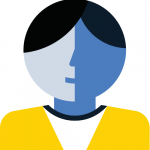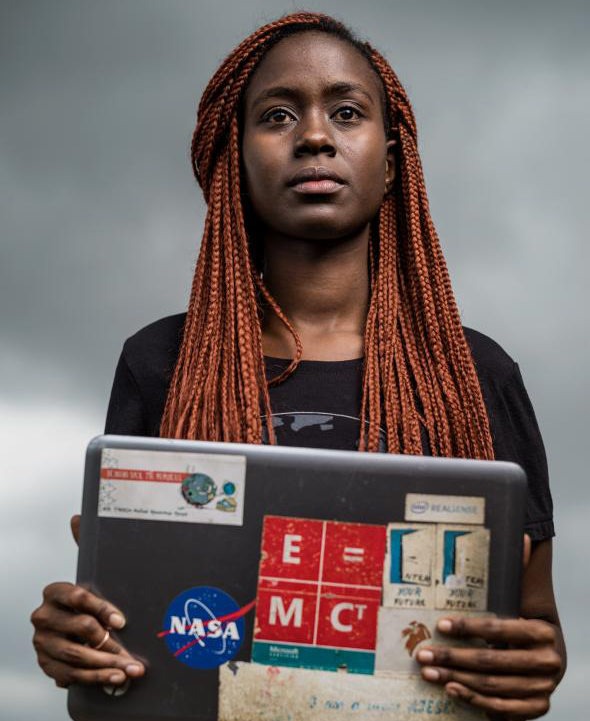What to expect
To provide real-life examples to the sometimes-abstract-sounding concepts in this training, there are two personas that will serve as guides. Adam is a Grant Applicant from Sri Lanka who is interested in applying for Foundation funding for a specific project. Mariam is a Monitoring, Evaluation, and Learning (MEL) Expert that represents the Foundation.
 Mariam: "After you have described the measurements and cost details it’s time to complete the finishing pieces of your project. Through following each of these steps, by the end of this section you will have described the sustainability potential and articulated the assumptions and external factors that could influence your project. You will also be guided in building out the project narrative using all the other elements of the project. Finally, we provide you with the information necessary to draft your project summary, which will be the first section you fill out within the Fluxx grants management system."
Mariam: "After you have described the measurements and cost details it’s time to complete the finishing pieces of your project. Through following each of these steps, by the end of this section you will have described the sustainability potential and articulated the assumptions and external factors that could influence your project. You will also be guided in building out the project narrative using all the other elements of the project. Finally, we provide you with the information necessary to draft your project summary, which will be the first section you fill out within the Fluxx grants management system."
Consider sustainability potential
When you are planning your project, consider how it can be made sustainable. Are there activities that will train local trainers that could continue their work after the project and/or project funding from the Foundation has ended? Are there ways that the products and services that are created through the project could be utilized independently of the project funding? How could you scale your project to meet your community’s unique needs? How could it be adjusted for the different needs of others?
Guidance Modules
 Adam: “We have already thought about how we could make this project sustainable. Any of the materials developed for the training of the girls will afterwards be handed over to the multi-stakeholder platform, which includes both alumni from the trainings and the employers, university and school stakeholders that can make these trainings happen in the future. All they need to do is organize a time, venue, and facilitator, and then they can run the same trainings for new generations of girls! We will follow up with them to encourage them to do so."
Adam: “We have already thought about how we could make this project sustainable. Any of the materials developed for the training of the girls will afterwards be handed over to the multi-stakeholder platform, which includes both alumni from the trainings and the employers, university and school stakeholders that can make these trainings happen in the future. All they need to do is organize a time, venue, and facilitator, and then they can run the same trainings for new generations of girls! We will follow up with them to encourage them to do so."
 Mariam: "That’s great to hear! Make sure you capture it as part of the grant application."
Mariam: "That’s great to hear! Make sure you capture it as part of the grant application."
Draft assumptions and consider external factors
Every part of your theory of change will rely on certain assumptions to be true. These are aspects about the world which your project cannot influence, but which you need to stay constant in order for your project theory of change to function. It is helpful to draw these out as you are developing the theory of change with your partners – that way, everyone is aware of the ways in which the project could potentially struggle, and you can plan for it.
 Adam: “During the “Look back” when I was looking at similar projects, I learned that often there are factors preventing the girls from even thinking about starting a career in tech, and some of them we cannot influence. So, I wrote them down as assumptions:
Adam: “During the “Look back” when I was looking at similar projects, I learned that often there are factors preventing the girls from even thinking about starting a career in tech, and some of them we cannot influence. So, I wrote them down as assumptions:
- School girls are already interested in careers in the tech sector, but are unaware of the opportunities or ways to start such a career.
- School girls will not face conflict with their parents, peers or other important relations if they decide to work towards a career in tech.
- Potential employers are open to employing women and men on an equal basis."
 Mariam: "Excellent! Let’s write all of those down in the grant application."
Mariam: "Excellent! Let’s write all of those down in the grant application."

Build out your grant application narrative
As you work through the draft, keep in mind how you could measure whether these activities are leading to the results (outputs and outcomes) you have identified in the logical framework. Building out the proposal draft will require adjustments to the theory of change (and the logic model, if you chose to create one) as you go – this is an iterative process and requires critical thinking.
Finally, throughout the proposal development process, consider who will be reviewing your narrative. The Foundation reviews all proposals through a panel process, which takes into consideration cost feasibility, alignment with Foundation priorities, and strength of potential impact, scalability and sustainability, among other factors.
 Mariam: "Now that you have looked at your assumptions, does the theory of change still hold?"
Mariam: "Now that you have looked at your assumptions, does the theory of change still hold?"
 Adam: “Most of it, yes – but maybe we need to change the activities and deliverables a bit to take into account the level of interest of the girls in emerging tech careers."
Adam: “Most of it, yes – but maybe we need to change the activities and deliverables a bit to take into account the level of interest of the girls in emerging tech careers."
Draft grant application summary
As a final step in the process, review your draft grant application in full. Capture the most valuable elements and draft a brief summary to encapsulate the project succinctly. You should consider using your theory of change as a foundation for this summary, but at the very least make sure that you include the project goal and the key activities.
This summary will be the first element that you will be asked to fill in as part of the grant application on the Foundation’s grant management system, Fluxx.
Example
This project will contribute to enabling Women in Sri Lanka to have successful careers in the emerging internet technology sector (= Project goal). Women face considerable barriers to entering this sector, which results in them missing out on important opportunities (= Problem statement). This project will provide 40 girls with skill-building activities to enable them to start a career in the sector. In addition, we will establish a multi-stakeholder platform to facilitate the entry of young women into the tech sector, a problem-solving forum made up of employers, schools and other stakeholders (= Activities).
Optional: Encouraged action
Create a Monitoring, Evaluation, and Learning (MEL) Plan
We recommend developing a monitoring plan that outlines how project progress will be monitored and analyzed throughout the lifecycle as one of the final steps of the application process. This plan should also include important definitions of the indicators so you and your organization, as well as the Foundation, share the same understanding of the indicators.
The MEL plan outlines how data on project progress will be collected throughout the project – often through direct observation, partner/trainer/fellow reporting, online surveys, interviews, and/or focus groups.
 Adam: “I think my indicators are clear, we are mainly counting participants, that is not difficult. Do I need to define it further?"
Adam: “I think my indicators are clear, we are mainly counting participants, that is not difficult. Do I need to define it further?"
 Mariam: "An indicator that tracks the number of participants in a series of trainings – is the number of participants counted just once for the series of trainings? Or for each separate session? If this isn’t clear, a project that works with the same 10 participants during 10 different training sessions over the course of a year could look like there were 100 participants instead of 10. Both answers could be valid, depending on the definition but it’s important to make clear what you are really aiming for."
Mariam: "An indicator that tracks the number of participants in a series of trainings – is the number of participants counted just once for the series of trainings? Or for each separate session? If this isn’t clear, a project that works with the same 10 participants during 10 different training sessions over the course of a year could look like there were 100 participants instead of 10. Both answers could be valid, depending on the definition but it’s important to make clear what you are really aiming for."
 Adam: “Is there anywhere I can find a sample of a strong grant application that I can use as inspiration?"
Adam: “Is there anywhere I can find a sample of a strong grant application that I can use as inspiration?"
 Mariam: "Sure! If you are curious about seeing a sample of a strong grant application, you can find an example here. Keep in mind that this is related to the Beyond the Net – Large Grants, which is only one of the Foundation’s programme areas, but it should still give you an idea!"
Mariam: "Sure! If you are curious about seeing a sample of a strong grant application, you can find an example here. Keep in mind that this is related to the Beyond the Net – Large Grants, which is only one of the Foundation’s programme areas, but it should still give you an idea!"
Top tips
Data collection techniques should help to gather project data for the Foundation. The following are examples of helpful information that donors are frequently looking for:
- Knowledge and skills gained
- The reach of project-supported work - Influence of project
- Changes in behavior over time
For outcome-level indicators, the result will often not be immediate so factor in the follow-up for those indicators within the appropriate projected timeframe.
The plan should also establish how often data will be collected and by whom and also a timeline for the evaluation and learning sessions (preferably monthly but quarterly is also possible). For the definitions, separate each KPI and fill out descriptive information and reasoning for why it is relevant to measure progress. A helpful hint for the indicator definitions is to imagine someone is looking at your project with no other information about the context – what would they need to see in order to understand what you are trying to achieve, and how well it is going?
Top tip
Prior to submission, take some time to review the Foundation website to make sure that your proposal is responsive to the stated priorities. When preparing the grant application, use clear and easy-to-understand language that will quickly help the reviewers understand what your project aims to do – don’t assume that the panel reviewers are experts in your project.
